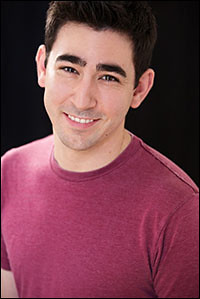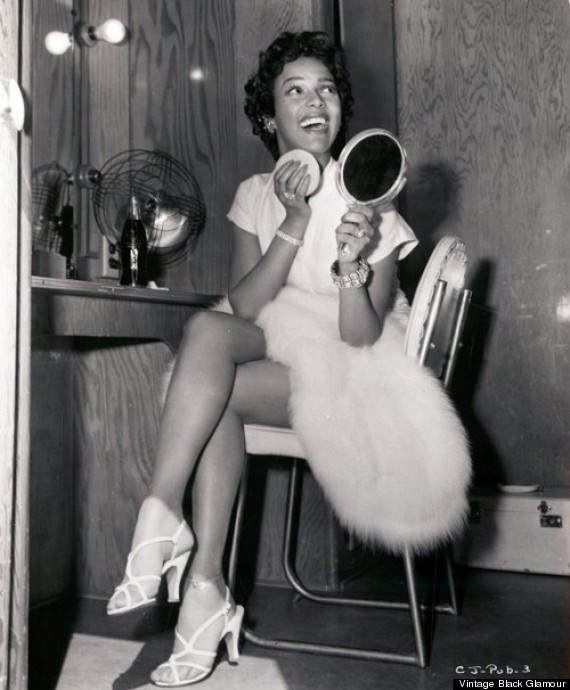
With two of Frank Loesser’s biggest hits returning in the form of simultaneous all-star concerts, last week New York experienced a rare treat for Classic Broadway lovers and the ClaBro-curious alike. Wednesday – Sunday, Encores! gave us the quasi-operatic romance The Most Happy Fella with Laura Benanti, Cheyenne Jackson, Shuler Hensley, Heidi Blickenstaff, Jay Armstong Johnson and… yeah, basically everyone The Craptacular has ever written about. Then, on Thursday, Carnegie Hall exploded with the musical comedy excitement of Guys and Dolls, starring Nathan Lane in the role that made him famous, along with Patrick Wilson, Sierra Boggess, Megan Mullaly, John Treacy Egan, Len Cariou and Judy Kaye.
Frank Loesser was unique among Golden Age songwriters for a number of reasons: his earliest hit songs were written for the movies, marrying his lyrics to tunes by Jule Styne, Hoagie Carmichael, Burton Lane and others. In the mid-1940s, he began writing his own music, leading to his first Broadway show, the hit Where’s Charlie, and his Oscar-winning song “Baby, It’s Cold Outside.” (Please, if you want to debate the perceived rapey-ness of this song, do it in the comments of someone else’s post.)
1950 brought Guys and Dolls, which cemented Loesser’s place in the firmament of stellar songwriters. I think for readers under a certain age — or those with a short memory — Guys and Dolls is a show that needed a bit of rehabilitation after the Des MacAnuff production that sullied the Nederlander a few years ago. The original production of Guys and Dolls ran for three years, spawning a movie, productions around the world, six New York revivals (three at City Center, three on Broadway), and giving the world a bevy of standards like Fugue for the Tinhorns, Bushel and a Peck, Sit Down You’re Rockin’ The Boat, and most famously, Luck Be A Lady. Based on the colorful stories of Damon Runyon, Guys and Dolls built on the Rodgers & Hammerstein model of the integrated musical, proving the form could work just as well for comedies as it did for Rodgers & Hammerstein’s more serious musical plays. That being said, Guys and Dolls also deviated from the prescribed format by beefing up the roles of the comedic couple so that rather than occupying a secondary B-plot, they became a main plot in parallel to the romantic leads.
Guys and Dolls has survived many permutations, including performances at just about every high school in America, a generally ill-regarded film starring Marlon Brando (who really can’t sing) and Frank Sinatra (who was pissed he was cast as the comedic Nathan rather than the romantic Sky) and an all-Black production in 1976 that reorchestrated the score to sound more like Motown of the ’70s and suggested the action might have moved to Harlem (although critics complained that the script changes didn’t go far enough in establishing a new setting). For the last decade or so, rumors of a new film version have been circulating, most recently with Joseph Gordon-Leavitt and Channing Tatum named as hoped-for leads.
In 1992, Jerry Zaks shepherded a new production to Broadway starring Nathan Lane, Faith Prince, Josie de Guzman, and Peter Gallagher, and it was a sensation. It was THE show everyone wanted tickets to—The Book of Mormon of its day, only it was a revival of a forty-year-old property. As I mentioned above, the show made a bona fide star of Nathan Lane. (He lost the Tony Award to Gregory Hines, who won for Jelly’s Last Jam, in a season that also included Crazy for You and Falsettos… and I remember at the time thinking that season was a weak one!)
At the time, I was 14, so I had to settle for the road company (starring Lorna Luft as Miss Adelaide!) which, to be honest, was really quite good. Still, I’ve always regretting missing Nathan Lane in the role, so I’m thrilled I had the opportunity to attend this gala benefit performance. Besides, if you’re not excited to have Patrick Wilson back on the musical stage, you must be new here to The Craptacular.
The concert was everything I wanted it to be and then some. Perhaps the biggest surprise was that while Nathan Lane was excellent, his was the least-talked-about performance after the show among my friends (probably because he delivered exactly what we wanted and expected). Megan Mullally was simply perfect as Adelaide, unsurprisingly nailing the humor but also mining every bit of pathos found in that character, without going overboard. She also looks incredible, and I can only hope that I look (and dance) half as well when I’m 55. Sierra Boggess reminded us that she can go from belt to legit soprano with the blink of an eye, and it took all my restraint not to scream with delight, “That’s right, you option up gurrrl!” at the end of “I’ve Never Been In Love Before.” Her “If I Were A Bell” was so good I literally leaned over the edge of the Dress Circle to scan the orchestra for surreptitious video cameras because I knew I’d want to see that performance again. And Patrick Wilson did was he does best, which is sing beautifully and radiate sexiness; anyone who didn’t melt when he said “Yeah, chemistry” has no soul. I’ve heard some complaints that Wilson’s acting in the book scenes left a little to be desired, but that’s not what I go to concerts for anyway.
To be fair, I also didn’t buy this ticket with any interest in the supporting cast, but they blew me away. In fact, in addition to Mullally’s rendition of “Adelaide’s Lament,” I’m pretty sure the two biggest hands of the night went to John Treacy Egan, Christopher Fitzgerald, and Coleman Domingo’s performance of the title song and Len Cariou — the original Sweeney Todd! — for “More I Cannot Wish You,” a song that often elicits eye rolls but in the hands of Cariou brought tears to more than a few eyes.
When I bought my ticket to see Guys and Dolls, I didn’t realize it was the same week as The Most Happy Fella at Encores… and I’m not sure when the folks at Carnegie Hall planned their gala performance, they realized that either. When I spoke with Encores Artistic Director Jack Viertel earlier this season about the coincidence, he matter-of-factly said, “I think it’s just that Frank Loesser is awfully good, and why not do them all the time?” It’s hard to disagree.
As much as Guys and Dolls is considered musical-comedy perfection, The Most Happy Fella is considered the same for musical drama. Based on Sidney Howard’s 1924 Pulitzer Prize-winning play They Knew What They Wanted, the show tells the story of a waitress from San Francisco who tries her luck at love when she’s invited to move to the Napa Valley vineyard of a love-struck customer she doesn’t remember, Tony. The twist is that Tony is an older, ugly fellow who lures the waitress (whom he calls “Rosabella” because he never learns her name at the diner and then, I guess, doesn’t care enough to learn it later?) to California by sending a picture of his hunky foreman, Joe, rather than his own. I’m sure you can imagine the ensuing love triangle, but it becomes particularly clear when you picture Laura Benanti as Rosabella, Shuler Hensley as Tony, and Cheyenne Jackson as Joe. (Imagine showing up for a blind date with the thighs for Xanadu and being greeted instead with the monster from Young Frankenstein? Ugh.)
Happy Fella is an achievement on many levels. It’s one of the only hit musicals to come entirely from the pen of one person: Loesser wrote book, lyrics, and music. The score for Happy Fella is a masterpiece: it approaches operatic in places, particularly in the writing for Tony, which is why the piece has been adopted by several opera companies, including New York City Opera, but it also has its share of comedy numbers (like “Big D“) and pop tunes (including the standard “Standing on the Corner“), not to mention some of the most gorgeous choral writing ever heard on Broadway. And the story raises challenging questions that are as relevant today as when it was written.
Fans of classic television might remember an entire episode of I Love Lucy set around the Riccardos and the Mertzes seeing the show. In real life, Lucy and Desi were backers of the Broadway production, so this was an early bit of cross-promotion. Columbia released the cast recording on an unprecedented three LPs, preserving almost the entire show, which prompted them to also issue a one-record highlights version—the first, I believe, of its kind.
Happy Fella gets done more often than your average Encores show, with two Broadway revivals and two New York City Opera productions under its belt, but due to the size of the show, it rarely is done with the full cast and orchestra. The Encores production features 38 members of each. In fact, its last Broadway bow, in 1992 at Lincoln Center by way of the Goodspeed Opera House (the same season as the Jerry Zaks Guys and Dolls revival), was presented with only two pianos in place of the orchestra. There’s a lot to debate about that approach, but it’s worth mentioning that Loesser himself had written the two-piano reduction, the recording of that production is quite charming, and most importantly, it hasn’t supplanted the full-orchestra version in the marketplace. (It was done in New York as recently as 2012 with a full orchestra, in a production by the Dicapo Opera Company.)
A great production of Most Happy Fella is cause for celebration in any circumstance. The convergence of full orchestra and cast of Broadway (not Opera) performers mades this Encores production extra exciting. In many ways, this is the most ambitious Encores production yet, not only because of the size of the cast and orchestra, but also for the amount of music that will be performed. In recognition of this challenge, the Encores folks added a few days to their usually-rushed rehearsal schedule, resulting in a slightly longer but still rushed rehearsal period. God bless them.
The rehearsal certainly paid off. This was just about as perfect a production as Encores has ever done, and without a script in sight. Casey Nicholaw, best known for directing big, brassy comedies like The Book of Mormon and Aladdin, proved that he can handle musical drama, and what’s more, create a sense of intimacy even when there’s 76 people on stage in front of an audience of 2,000. Laura Benanti was her usual radiant, amazing, goddess-like, brilliant as Rosabella, a part that feels like it was written for her. (And I have to say, during the performance of Most Happy Fella I kept fantasizing about Benanti as Sarah Brown in Guys and Dolls, so let’s hope somebody makes that happen too.) There really wasn’t a weak link in this cast, but I want to especially shout out Heidi Blickenstaff as Rosabella’s best friend and belting sidekick, Cleo, because I am a gay man prone to going gaga over excellent musical comedy belting, and that’s exactly what she provided. In another era Jerry Herman would be writing a brand-new show for her right now. I hope someone else rises to that challenge. (The guys were great too, but do you really need me to tell you that Shuler Hensley commanded the stage or Cheyenne Jackson croons like a dream or Jay Armstrong Johnson was not only cute but danced his little buttocks off? You don’t.)
In summary: this week in New York we had an embarrassment of riches, and if you live outside of the city and think we’re bragging, we are.




















